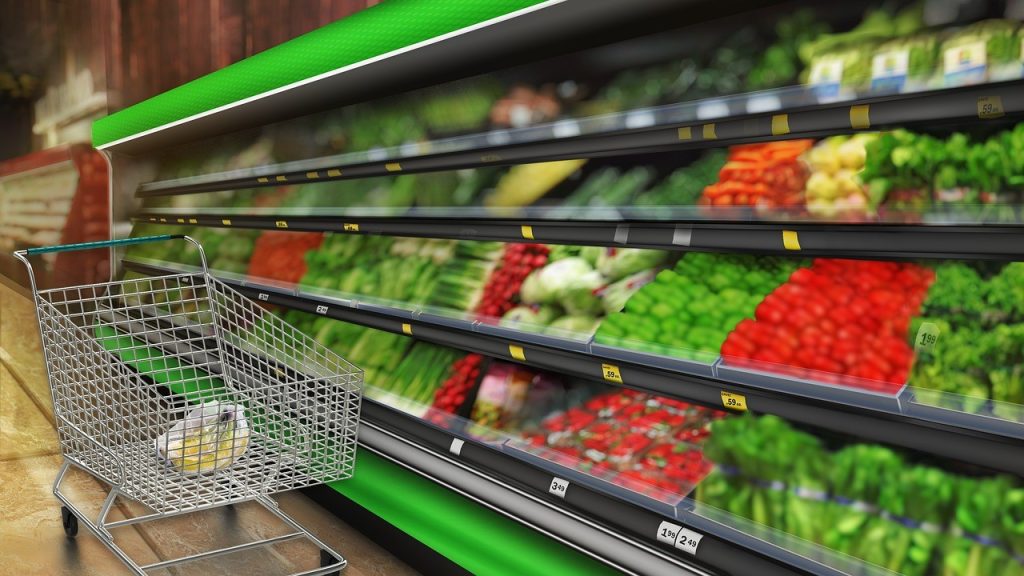All fields are required
Posted in Food Safety,Our Blog on March 22, 2024


Image by Jonathan Hammond from Pixabay
Are you making these common grocery shopping mistakes?
Grocery shopping is one of those mundane tasks we don’t give much thought to.
We need food.
We buy food.
It is that simple.
Have you ever considered how the way you shop could impact your health and food safety?
We are pretty lucky here in the United States to have a fairly safe food supply. Organizations like the US Food and Drug Administration (FDA) and United States Department of Agriculture (USDA) police food manufacturers, state and local health departments monitor food businesses at their own levels, and the Centers for Disease Control and Prevention (CDC) monitors for outbreaks.
Despite those contingencies, foodborne illness still happens. The CDC estimates that about 48 million cases of foodborne illness are reported each year. The equivalent of 1 in 6 Americans. This attribute to 128,000 hospitalizations and 3,000 unfortunate deaths each year. All due to foodborne illness.
Even if the food we buy is perfectly safe, we still have to transport it safely home, store it safely when we get it there, and cook it properly when we prepare it.
But the first step is shopping for it.
Most of the time, the store is organized to maximize foot traffic. It isn’t necessarily designed with food safety in mind. Dairy and meats are often at the back of the store. This design requires you to walk through a significant portion of the store to get your staples.
When shopping with food safety in mind, shopping order is key!
Shop dry and room-temperature items first. Get your bread, cereal, spices, canned goods, and other room-temperature items first. Those can sit safely in your cart at room-temperature as they can on the shelf at room-temperature.
After your room-temperature items have been shopped, you can move onto cold items. Cheese, milk, meat, frozen goods.
Bonus points if you have insulated bags to put those cold items in while you are shopping! Just remember to keep meat separate (see common grocery shopping mistake #2).
If you followed my advice from grocery shopping mistake #1, you have shopped your dry items first. Next up is meat. Meat and its juices are common carries of foodborne bacteria.
While in the cart or your insulated shopping bag, you do not want those items to touch.
If available, use disposable bags to contain any leaking juices from meats. Place them in the cart far away from dry goods, and especially your fruits and vegetables.
If using insulated shopping bags, be sure to use separate bags for meat items. While cheese and steaks both need to be kept cold, they should not be stored together.
In some stores, you may get a discount on damaged products. A box that is torn or a can that is dented could save you a few cents. But is it worth it?
Not really.
Any breach in the packaging can allow the safety to be compromised. If foodborne bacteria make its way into the product, it can grow and multiply into infectious numbers.
Skip the dented can special and stick with intact packages.
The bakery section of your grocery store may have some great, fresh options you can’t get in the center of the store. But consider the package when making your purchase.
That beautiful baguette peeking out of the paper sleeve may look like something you see in a movie, but how safe is it?
When bread is not fully packaged, it is vulnerable to everything in the air around it. Coughs, sneezes, and other aerosolized dangers can make its way onto the beautiful loaf and be carried back to your home. Not to mention the countless hands that might have touched it before you arrived.
Opt for fully packaged baked goods instead.
Seafood items are highly perishable. Shop them toward the end of your shopping trip (see common grocery shopping mistake #1) and pay attention to the seafood you are selecting.
When purchasing fish for sashimi or ceviche, only buy fish that is listed as “sashimi grade” as it is handled for that purpose. If you aren’t going to use the fish shortly after you buy it, consider cooking it or freezing it soon after you get home to ensure harmful bacteria do not grow in unsafe numbers while it waits for your dinner plans to catch up.
If available, ask for ice to keep the seafood cold. Also, consider using a handy-dandy insulated shopping bag. But keep in mind Common Shopping Mistake #2 and store it in a separate bag from your non-meat items.
Be mindful of expiration dates, particularly on dairy and meat items. Most other foods have a “best-by” date rather than an expiration date because it is not unsafe to consume the food after that date. Quality, on the other hand, may be compromised.
Dairy and meat beyond their expiration dates may cause foodborne illness. When food outlasts its life expectancy it begins to spoil, leading to an excess of bacteria that may make you sick.
Give yourself enough time to consume the food before the expiration date. If the expiration date is near, consider freezing the item if applicable to improve safety.
Both hand sanitizers and cart sanitizer wipes have become mainstream post-COVID. Not using them is a mistake. Whip out that sanitizer bottle and give your hand a good squirt after handling meat packages.
For the same reason you want to keep meat separate from other items in your cart, you may want to sanitize your hands after handling it. This will help minimize cross-contamination of other items you touch throughout your shopping experience.
If available, consider wiping down your entire cart with sanitizing wipes before you begin shopping. While you are making sure your items are kept separate, you have no idea where the previous cart driver placed their meat.
We work hard to keep ourselves and our families safe. Our personal food chain begins at the grocery store. Practice safe shopping to help minimize foodborne illness.
If you’d like to know more about food safety in the news, like Common Grocery Shopping Mistakes and How to Avoid Them, check out the Make Food Safe Blog. We regularly update trending topics, foodborne infections in the news, recalls, and more! Stay tuned for quality information to help keep your family safe, while The Lange Law Firm, PLLC strives to Make Food Safe!
By: Heather Van Tassell (contributing writer, non-lawyer)